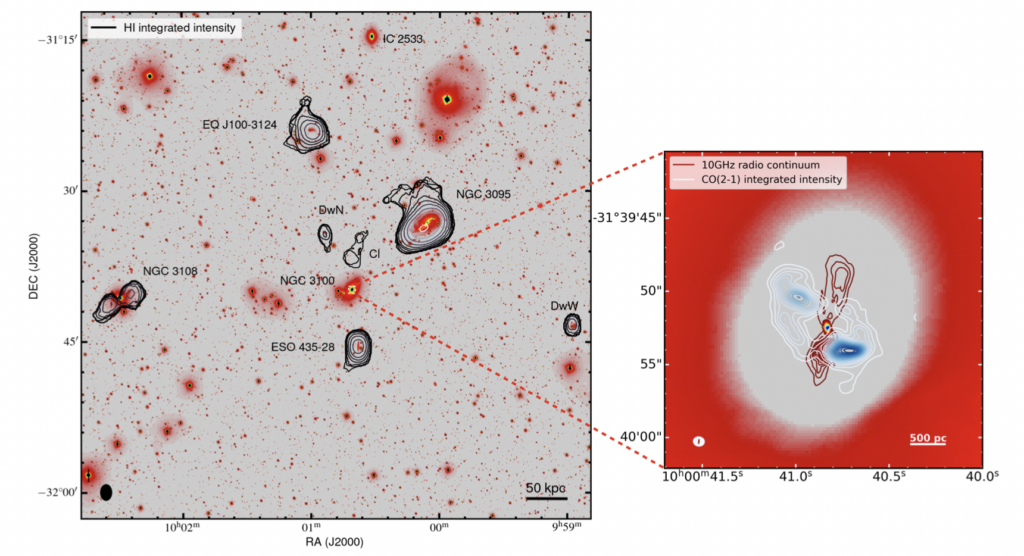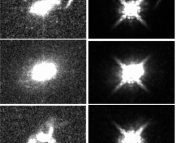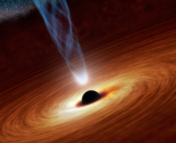Title: The AGN fuelling/feedback cycle in nearby radio galaxies – V. The cold atomic gas of NGC 3100 and its group
Authors: F. M. Maccagni, I. Ruffa, A. Loni, I. Prandoni, R. Ragusa, D. Kleiner, P. Serra, E. Iodice, M. Spavone
First Author’s Institution: ASTRON – Netherlands Institute for Radio Astronomy, Oude Hoogeveensedijk 4, 7991 PD, Dwingeloo, The Netherlands
Status: Submitted to Astronomy & Astrophysics [open access]
Powering a black hole
Black holes are believed to be found at the center of nearly every massive galaxy. They can act energetically and power strong winds and jets, which can lead to a phenomenon known as AGN feedback. The black hole in this state is commonly known as an Active Galactic Nuclei (AGN). The source of such activity remains a mystery. However, it is likely caused by gas falling into the black hole. The exact mechanism of how the black hole is fuelled is poorly understood. Does the black hole draw in gas due to its mighty gravity? Or do external factors play a role in pushing gas toward the black hole?
The authors of today’s paper take a stab at this mystery by studying the cold neutral atomic gas (HI) in a galaxy known to host an active black hole. This gas comprises hydrogen atoms and can have temperatures as low as 10K (roughly 200 degrees Celsius colder than the coldest place on Earth). Stars are formed from this cold gas; thus, studying the distribution of cold gas in a galaxy with an AGN could give important clues about how the black hole affects the formation of stars in the galaxy or if it is the other way around.
The cold gas in galaxies, with its low temperatures and low energies, is ideally probed using electromagnetic waves with large wavelengths. The neutral hydrogen atoms emit radiation when the electron reverses its spin to the proton. The wavelength of this radiation is around 21 cm; thus, radio waves are used extensively to study cold gas. The authors of today’s paper use the Australia Telescope Compact Array (ATCA) radio telescope to probe the neutral atomic hydrogen in and around a galaxy NGC 3100. This galaxy has a black hole at its center and also has powerful jets.
HI observations
HI was observed near the center of the galaxy and in some nearby galaxies, including two dwarf galaxies (See Figure 1). HI was also detected in a cloud in the region between NGC 3100 and a surrounding galaxy. The authors use this distribution of the HI gas to piece together how the group of galaxies assembled. This can determine if any galaxies went through an interaction, such as a merger, and the consequences it can have for the cold gas and the AGN.

The interactions between galaxies can be determined using a phase-space diagram (Figure 2). This diagram correlates the velocities of the galaxies with the distance from the center of the group. Most galaxies with significant detections of HI all fall within the virialized region of the NGC 3100 group. A virialized region indicates galaxies that are weakly bound together by gravity and, thus, are likely to have close interactions. All these galaxies could have interacted with each other and moved their cold gas around.

Using the phase space diagram and comparing the stars within the galaxies with the distribution of the cold gas, the authors conclude that none of the galaxies have undergone any significant interactions. If that were the case, then the gas would be severely disturbed. Instead, they find that most of the disturbed gas is found only at the edges of the galaxies, indicating that the interactions were mostly minor. They also find that two galaxies, in particular, could have recently interacted closely with NGC 3100, which led to HI gas being stripped out, forming tidal tails, and falling into NGC 3100. Thus, the minor interactions could have played a role in replenishing the main galaxy with cold gas.
What happens to the fallen gas?
Minor interactions with other galaxies in the group could have led to the infall of cold gas into the central region of NGC 3100. Combining observed data with simulations of gas modeling and other observations, the authors find that the atomic HI gas in the central part of NGC 3100 is closely associated with the CO gas (which is a tracer for molecular H2 gas) in a possible circumnuclear disk, which is a ring of molecular gas enclosing the innermost regions of the galaxy. This shows that the neutral gas is turning into molecular gas, the primary fuel for star formation. This gas could also fall into the active black hole and trigger powerful jets. This showcases a unique case of how external factors such as mergers could have affected essential properties of the galaxy, such as star formation and possible black hole activities.
Does the cold gas trigger the AGN?
Through this paper, the authors study the cold atomic gas in a galaxy group that has a galaxy with an AGN. They find that the galaxies in the group have undergone minor interactions with each other. These interactions are not strong enough to completely strip the galaxies of gas. Instead, they just get slightly disturbed and are mostly affected at large distances from the center of the galaxy. These interactions also could have funneled cold gas to the center of the galaxy NGC 3100, where it is possibly turning into molecular gas that can be used to form stars. Some of this cold gas could also fall into the black hole and set off the powerful activities associated with such active black holes. The likely triggering of an AGN due to external factors will have significant implications on narrowing down possible AGN fuelling channels. More work needs to be done to determine the extent to which these external interactions directly affect the triggering and how they compare to possible internal AGN triggering mechanisms.
Astrobite edited by Keighley Rockcliffe
Featured image credit: ESA/Hubble & NASA




